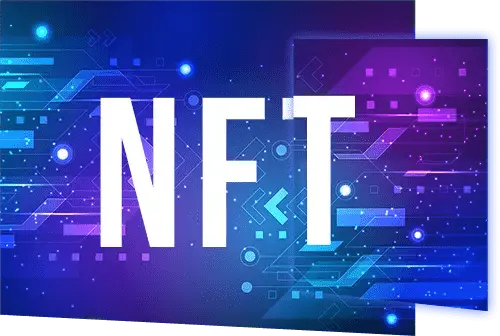- Services
- Hire Developer
- Our Products
- Insights
- Our Company
Chain of Truth: How Blockchain Technology can put a Stop to the Spread of Fake Information?

With the emergence of the Internet, how information is published, shared, and consumed has drastically changed. Whereas before, people could rely on trustworthy news sources, journalists, and established media outlets, determining the reliability of online stories and news is now significantly more challenging. This article will focus on the potential of blockchain technology to curb the proliferation of false information.
What is Fake Information?
Fake information, in the form of click baits, propaganda, sloppy journalism, satire/parody, misleading headlines, imposters, and manipulated content, is an array of news, stories, or hoaxes deliberately crafted to misinform and deceive readers. These falsities are created to influence the perspective of readers.
The impact of false information on people cannot be underestimated. It's so interesting to see how fake news spreads like wildfire and how people get influenced by it. False information can lead to confusion, panic, and even chaos. For instance, during the Covid-19 pandemic, there was a lot of fake news circulating online about the virus, its cure, and prevention measures. This caused people to act in ways that were not helpful or even dangerous. False information is often spread through social media platforms, and it's disheartening to see how easily people fall prey to it.
The Role of Blockchain Technology In Preventing The Spread Of Fake Information
Blockchain is a powerful technology renowned for its immutability, transparency, traceability, and decentralization. Information stored on the blockchain is constantly reverified and is almost impossible to tamper with. This decentralized validation capability of blockchain can be used to not only track financial resources but virtually any type of content. Consequently, blockchain technology can be fruitful in tackling the issue of fake news.
Verifying Provenance: Blockchain technology allows for the tracking and authentication of sources, providing an ideal platform for publishing houses to create a permanent record of the images released before. Furthermore, meta information such as captions, locations, and copyright ownership can be made transparent, allowing users to verify its accuracy. The involvement of multiple validators to analyze and verify news articles further contributes to a transparent and auditable verification trail, thus facilitating user identification of trustworthy information.
Decentralized content curation: Blockchain technology facilitates the development of decentralized content curation platforms, wherein users collaborate in moderating and identifying false information. The community will identify and filter out inaccurate material using consensus mechanisms such as voting or reputation-based systems, ensuring the availability of only validated and trustworthy content for the public.
Reputation systems: Blockchain-based reputation systems can assess the credibility of individuals, organizations, and news sources. Reputation scores may be assigned based on the accuracy and reliability of such information and stored on the blockchain for user reference. However, crucial factors must be considered, such as who sets the standards, who contributes to the ratings, and who administers disagreements and the associated protocols. Furthermore, any system dealing with personal information must ensure privacy and security by local and international regulatory requirements.
Transparent advertising and funding: Blockchain technologycan increase transparency in advertising and funding models, which are often associated with propagating false or untruthful content. Smart contracts on the blockchain can create a transparent record of ad placements and payments, thereby reducing the possibility of fraudulent advertising practices.
User Personas Involved In Blockchain Technology-Based News Platform
Blockchain technology is revolutionizing the way we interact with information. A blockchain-based platform identifying false information may benefit from different user personas, each with unique roles and responsibilities. These personas help to ensure that the information disseminated is accurate and trustworthy.
Content Creators/Journalists:Content creators are essential to upholding the accuracy and reliability of the information disseminated through the platform. They are responsible for generating news articles, reports, and other forms of content and submitting them for verification and publication.
Validators/Fact-checkers:Validators confirm the validity and precision of the submitted material. To do so, they conduct extensive investigations, assess the claims for accuracy, and evaluate the reliability of sources. With specialized knowledge in various subject areas and varying techniques, validators strive to guarantee the truthfulness of the information.
Users/Readers:The platform's users constitute its audience and are responsible for consuming the news and information it provides. As they rely on the platform to access reliable and confirmed material, they may also contribute by notifying them of potential false news, verifying facts, or engaging in conversations related to the content.
Reputation Managers:Reputation managers are responsible for overseeing the functioning of the platform's reputation system. They must provide validators and content creators with appropriate reputation scores that reflect the quality and accuracy of their works. They also must ensure that the reputation system operates in a fair manner, as well as motivate sensible conduct.
Community Moderators:Community moderators bear a significant responsibility in overseeing and upholding the platform's community standards. This involves examining user-generated content, implementing guidelines, and dealing with violations or disputes. Moderators are instrumental in maintaining the platform's integrity and trustworthiness.
To Sum Up
Blockchain has the potential to provide greater accuracy and transparency. At its core, it is simply a recording mechanism. The communities utilizing these platforms are responsible for establishing how content is added to the ledger, how it is verified, and what incentives are employed to generate and preserve that trust. If users do not believe in most contributors responsible for recording and confirming the data, we will be back at the beginning. No technology can ever fully address the difficulty of cultivating trust among people, or abolish the human motivations for profit and political advantage which breed disinformation, to begin with.
 info@infograins.com
info@infograins.com




















